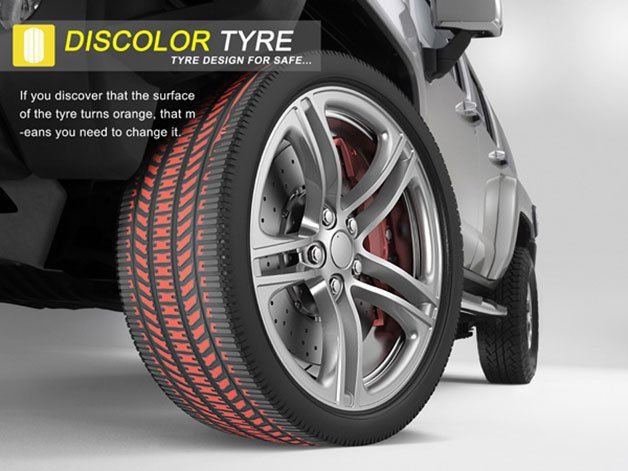Understanding it couldn't be simpler: A layer of colored rubber beneath the black casing will appear when the outer tread depth falls beneath a certain amount. Fenglin and Buyi estimate that 20,000 kilometers of driving, or about 12,400 miles, will cause the colored tread to show, but there's no reason why harder rubber compounds couldn't increase that number. A side benefit is that it would also quickly reveal tears in the casing and the sources of leaks.
This isn't the first concept to use alternate hues to detect tread depth, with other ideas having already been patented. The patented Colored Wear Indicator for Tires uses not just one, but several colors to indicate how far the tread has worn down. The patent for a Vehicle Tire Tread Depth Determining System, conversely, doesn't use a fixed color, it uses an ultraviolet-sensitive layer that changes color after enough tread has worn down so that it is exposed to sunlight. We're sure there are more out there; point being that designers are already thinking about how we'll check our tires when the last car parts store closes for good... and we run out of pennies.
Nouvelles connexes



